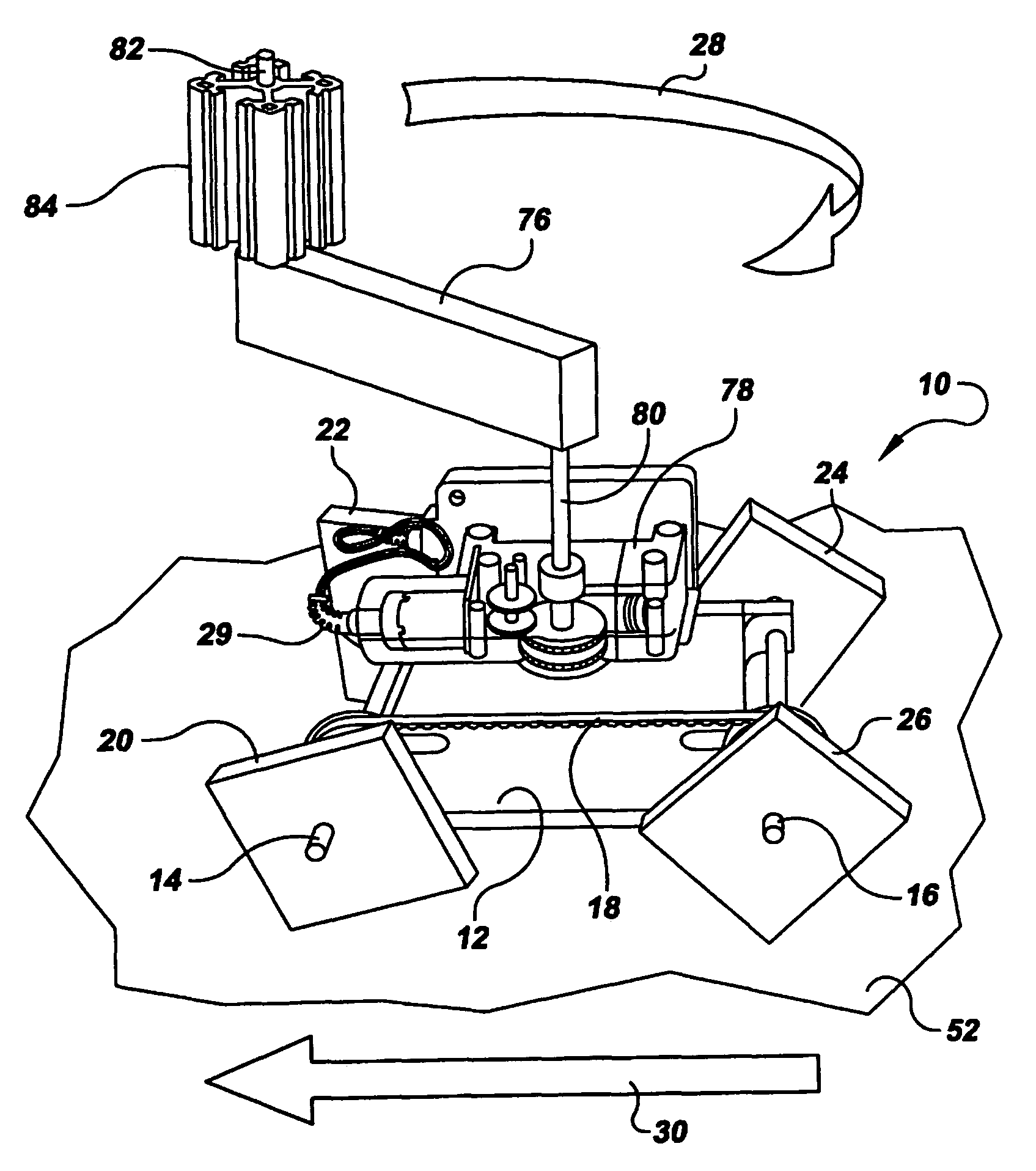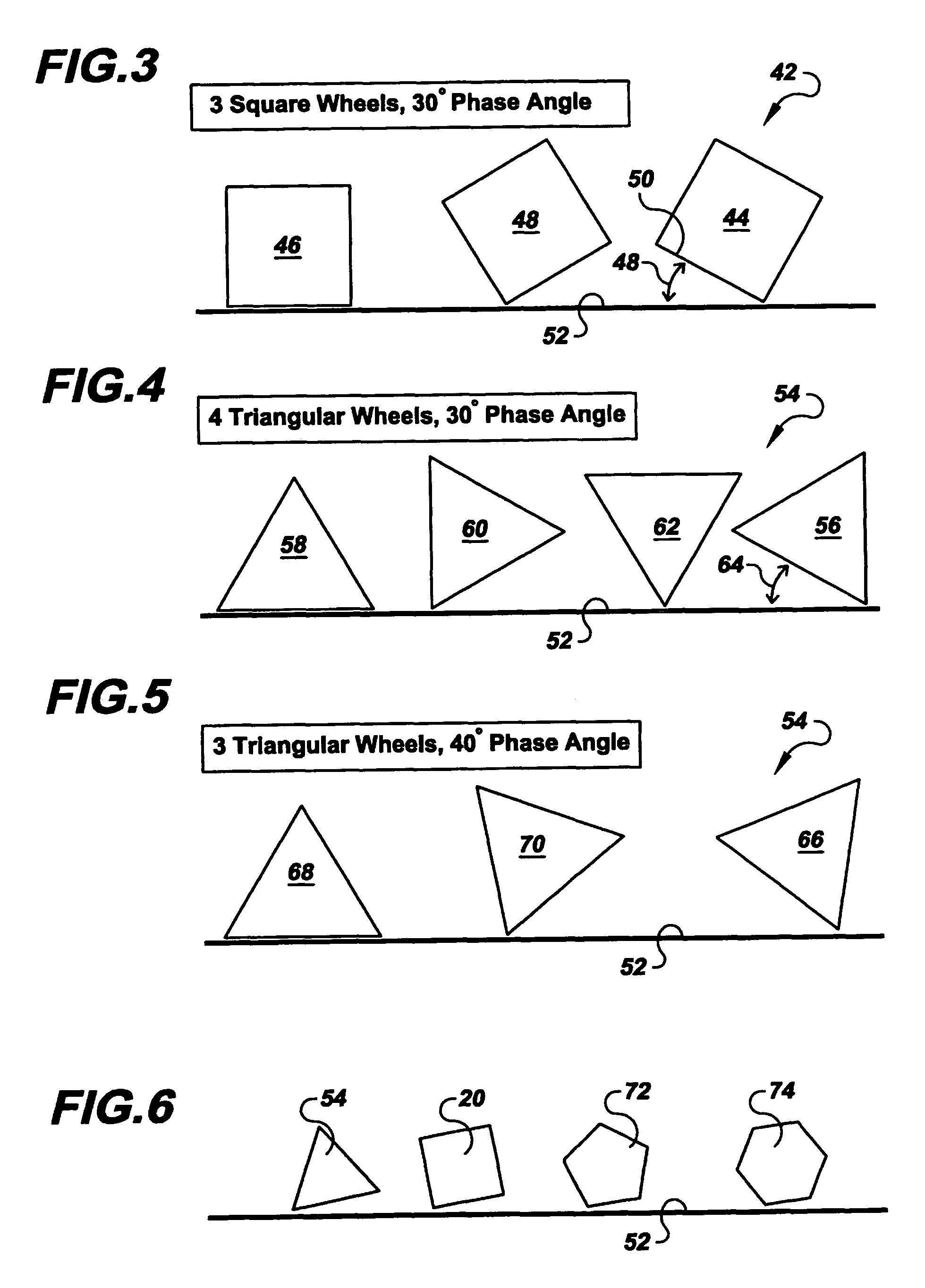Vehicle having non-circular wheels propelled by a moving weight
a non-circular, weight-bearing technology, applied in the field of vehicles, can solve the problems of excessive complexity, excessive cost of achieving any valuable function, and complicated apparatus, and achieve the effect of facilitating movement over uneven terrain and minimizing any problems with wheel dragging
- Summary
- Abstract
- Description
- Claims
- Application Information
AI Technical Summary
Benefits of technology
Problems solved by technology
Method used
Image
Examples
Embodiment Construction
[0029]Referring to the drawings in detail, a vehicle having non-circular wheels is shown in FIG. 1, and is generally designated by the reference numeral 10. The vehicle 10 includes a frame 12 having a first axle 14 and a second axle 16, and a linkage means secured between the first and second axles 14, 16 for rotating the first axle 14 upon rotation of the second axle 16 and for rotation of the second axle 16 upon rotation of the first axle 14, such as a gear belt, chain, or any known mechanical connection 18 extending between the axles 14, 16. Additionally, the linkage means may include direct mechanical, hydraulic, electric, or any known linkage means capable of rotating all non-circular wheels upon the rotation of one of the non-circular wheels, wherein the linkage means 18 replaces the first and second axles 14, 16.
[0030]A first non-circular wheel 20 and a second non-circular wheel 22 are firmly secured to opposed ends of the first axle 14, and a third non-circular wheel 24 and ...
PUM
 Login to View More
Login to View More Abstract
Description
Claims
Application Information
 Login to View More
Login to View More - R&D
- Intellectual Property
- Life Sciences
- Materials
- Tech Scout
- Unparalleled Data Quality
- Higher Quality Content
- 60% Fewer Hallucinations
Browse by: Latest US Patents, China's latest patents, Technical Efficacy Thesaurus, Application Domain, Technology Topic, Popular Technical Reports.
© 2025 PatSnap. All rights reserved.Legal|Privacy policy|Modern Slavery Act Transparency Statement|Sitemap|About US| Contact US: help@patsnap.com



